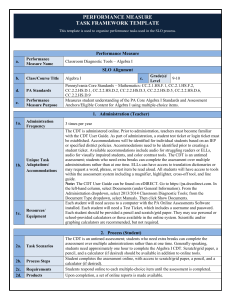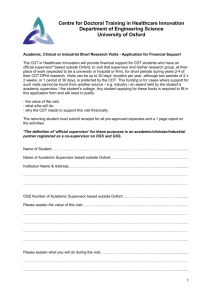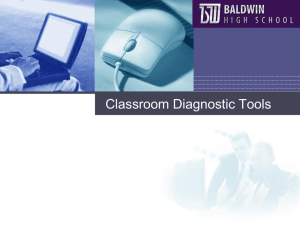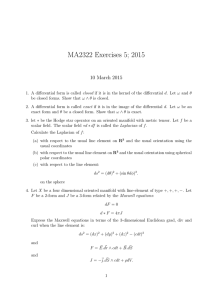S U P E R V I S E D ...
advertisement
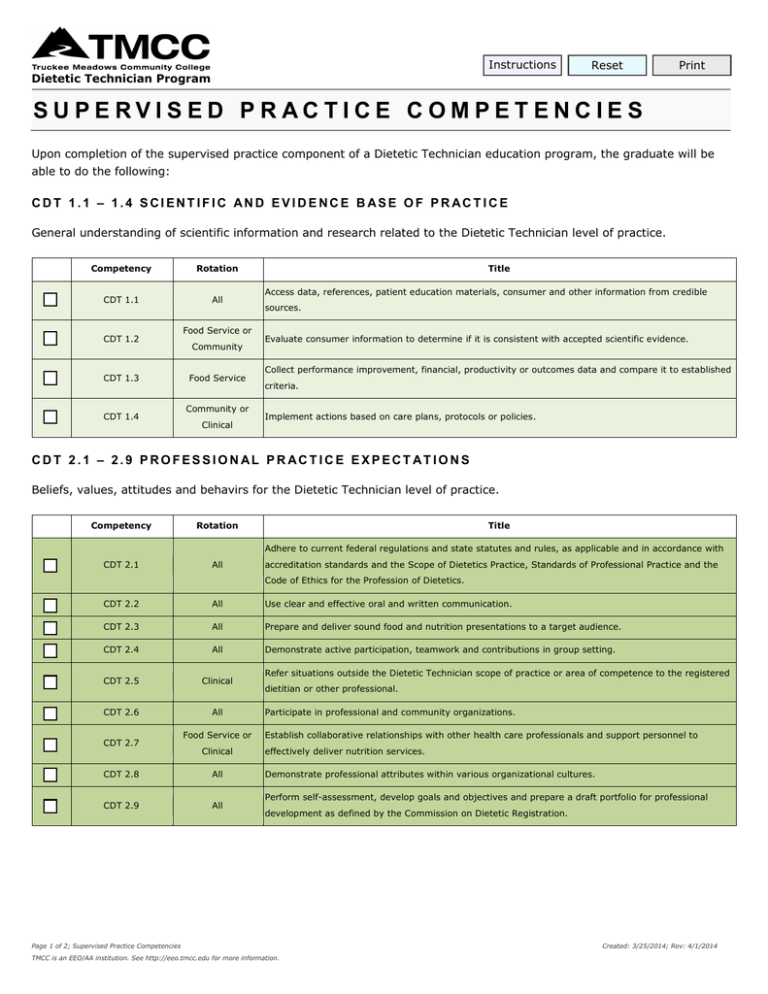
Instructions Dietetic Technician Program Reset Print SUPERVISED PRACTICE COMPETENCIES Upon completion of the supervised practice component of a Dietetic Technician education program, the graduate will be able to do the following: CDT 1.1 – 1.4 SCIENT IF IC AND EVIDENCE B ASE O F PRACT ICE General understanding of scientific information and research related to the Dietetic Technician level of practice. Competency Rotation CDT 1.1 All CDT 1.2 CDT 1.3 CDT 1.4 Food Service or Community Food Service Community or Clinical Title Access data, references, patient education materials, consumer and other information from credible sources. Evaluate consumer information to determine if it is consistent with accepted scientific evidence. Collect performance improvement, financial, productivity or outcomes data and compare it to established criteria. Implement actions based on care plans, protocols or policies. CDT 2.1 – 2.9 PROFESSIO N AL PR ACT ICE EXPECT AT IO NS Beliefs, values, attitudes and behavirs for the Dietetic Technician level of practice. Competency Rotation Title Adhere to current federal regulations and state statutes and rules, as applicable and in accordance with CDT 2.1 All accreditation standards and the Scope of Dietetics Practice, Standards of Professional Practice and the Code of Ethics for the Profession of Dietetics. CDT 2.2 All Use clear and effective oral and written communication. CDT 2.3 All Prepare and deliver sound food and nutrition presentations to a target audience. CDT 2.4 All Demonstrate active participation, teamwork and contributions in group setting. CDT 2.5 Clinical CDT 2.6 All CDT 2.7 Food Service or Clinical CDT 2.8 All CDT 2.9 All Refer situations outside the Dietetic Technician scope of practice or area of competence to the registered dietitian or other professional. Participate in professional and community organizations. Establish collaborative relationships with other health care professionals and support personnel to effectively deliver nutrition services. Demonstrate professional attributes within various organizational cultures. Perform self-assessment, develop goals and objectives and prepare a draft portfolio for professional development as defined by the Commission on Dietetic Registration. Page 1 of 2; Supervised Practice Competencies TMCC is an EEO/AA institution. See http://eeo.tmcc.edu for more information. Created: 3/25/2014; Rev: 4/1/2014 Instructions Reset Print Supervised Practice Competencies CDT 3.1 – 3.7 CL INIC AL AND CUST OM ER SERVICES Development and delivery of information, products and services to individuals, groups and populations at the Dietetic Technician level of practice. Competency Rotation CDT 3.1 Clinical CDT 3.2 Clinical Title Perform nutrition screening and identify clients or patients to be referred to the registered dietitian. Perform specific activities of the nutrition care process (a-e, below) as assigned by registered dietitians in accordance with the Scope of Dietetics Practice for individuals, groups, and populations in a variety of settings. CDT 3.2a CDT 3.2b Clinical or Community Clinical or Community CDT 3.2c Clinical CDT 3.2d Clinical CDT 3.2e Clinical CDT 3.3 Community CDT 3.4 CDT 3.5 CDT 3.6 CDT 3.7 Food Service or Community Community or Clinical Food Service Food Service or Community Assess the nutritional status of individuals, groups and populations in a variety of settings where nutrition care is or can be delivered. Diagnose nutrition problems and create problem, etiology, signs and symptoms (PES) statements. Plan and implement nutrition interventions to include prioritizing the nutrition diagnosis, formulating a nutrition prescription, establishing goals and selecting and managing intervention. Monitor and evaluate problems, etiologies, signs, symptoms and the impact of interventions on the nutrition diagnosis. Complete documentation that follows professional guidelines, guidelines required by health care systems and guidelines required by the practice setting. Provide nutrition and lifestyle education to well populations. Promote health improvement, food safety, wellness and disease prevention for the general population. Develop print and electronic nutrition education materials for disease prevention and health improvement that are culturally sensitive, age appropriate and designed for the educational level of the audience. Perform supervisory functions for production and service of food that meets nutrition guidelines, cost parameters, and health needs. Modify recipes and menus for acceptability and affordability that accommodate the cultural diversity and health status of various populations, groups and individuals. C DT 4.1 – 4.7 PR AC T ICE M AN AG EM ENT AND USE O F RESOUR CES Strategic application of principles of management and systems in the provision of services to individuals and organizations. Competency Rotation CDT 4.1 Food Service CDT 4.2 Food Service CDT 4.3 Community CDT 4.4 All CDT 4.5 Food Service CDT 4.6 CDT 4.7 Food Service or Clinical Food Service Title Participate in quality improvement and customer satisfaction activities to improve delivery of nutrition services. Perform supervisory, education and training functions. Participate in legislative and public policy activities. Use current informatics technology to develop, store, retrieve and disseminate information and data. Participate in development of a plan for a new service including budget. Assist with marketing clinical and customer services. Propose and use procedures as appropriate to the practice setting to reduce waste and protect the environment. Page 2 of 2; Supervised Practice Competencies TMCC is an EEO/AA institution. See http://eeo.tmcc.edu for more information. Rev.: 4/1/2014
